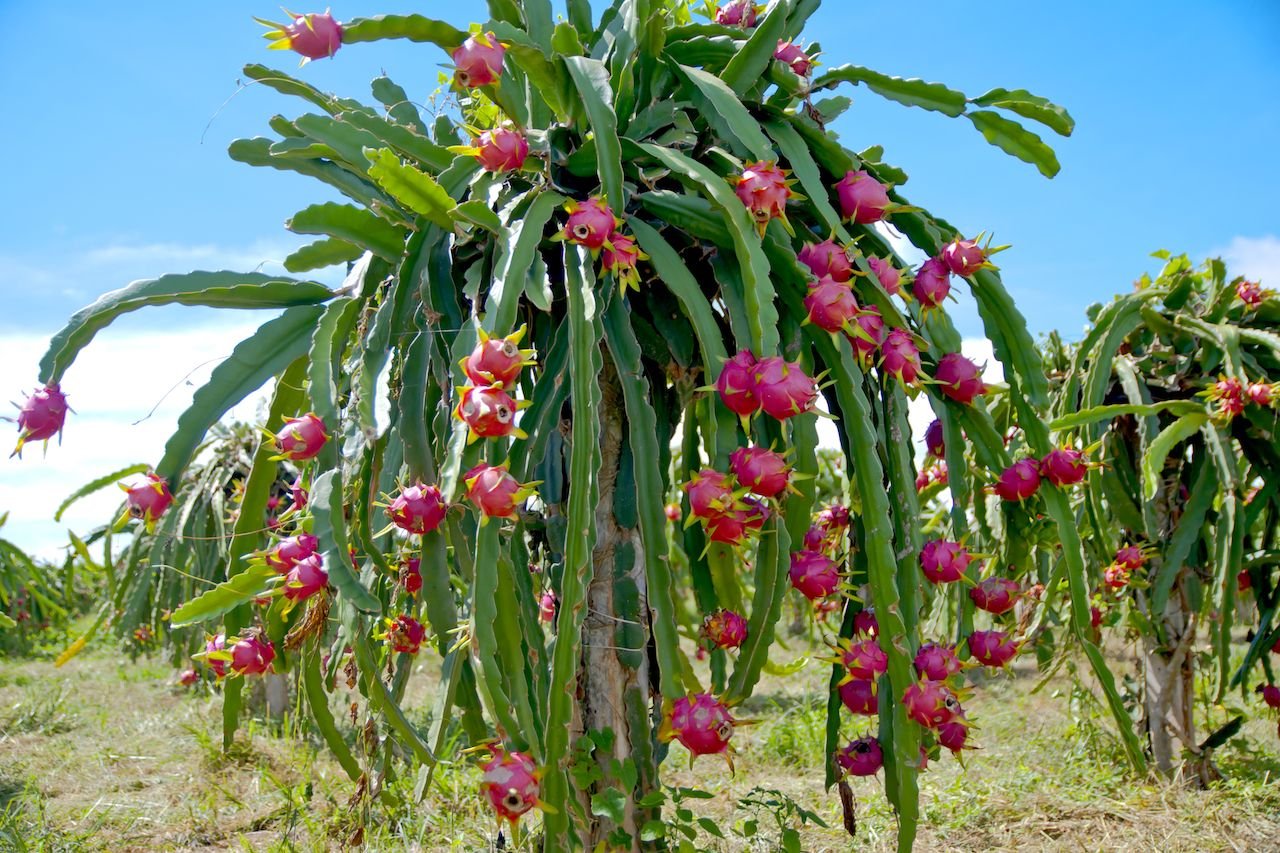Cactus plants aren’t just rugged survivors of the desert—they’re also nature’s hidden fruit baskets.
From the vibrant pink prickly pear to the dragon-like bloom of pitaya, many cactus species offer more than just eye-catching form—they produce fruit that’s not only edible but rich in nutrients and flavor.
In this guide, we’ll explore the world of cactus plants that produce edible fruit, diving into the best varieties to grow, how to care for them, and why these hardy plants deserve a place in your home garden, patio, or even sunny apartment balcony.
Whether you’re a gardener with a taste for the exotic or simply someone intrigued by unique plants, these fruit-bearing cacti will surprise and delight you.
Why Choose Edible Cactus Plants?
If you’ve only known cacti as prickly houseplants or desert icons, you’re in for a treat—literally. Many cacti produce fruit that is sweet, tangy, and often loaded with health benefits.
But that’s not all. These plants bring multiple advantages to your garden or container collection.
- Drought Tolerant: Perfect for arid climates and water-wise gardening.
- Low Maintenance: Require minimal care and thrive in poor soil.
- Nutritional Value: Cactus fruit is often high in antioxidants, fiber, and vitamin C.
- Aesthetic Appeal: Their blooms and fruits add colorful flair.
- Space-Saving Options: Many edible cactus varieties are suited to containers or small garden plots.
From their resilience to their refreshing fruit, cactus fruit plants offer beauty and bounty in one package.
Top Cactus Plants That Produce Edible Fruit
Let’s dive into the most popular and rewarding cactus varieties with edible fruit, whether you’re growing outdoors in full sun or indoors with the help of a grow light.
1. Prickly Pear (Opuntia spp.)
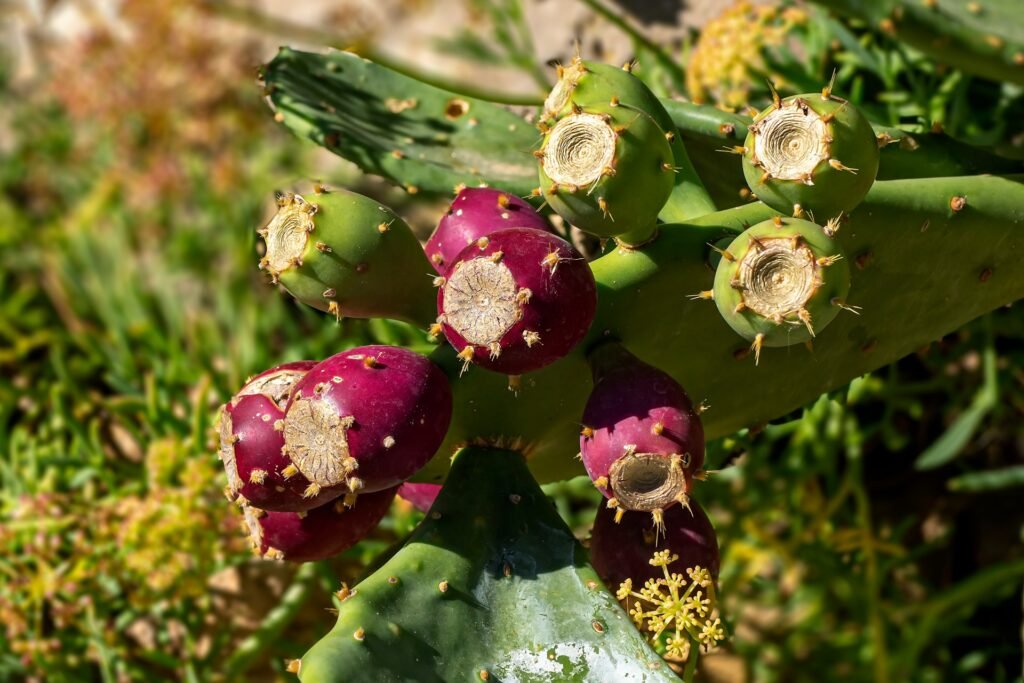
Possibly the most famous of all edible cacti, prickly pear cactus produces oval, red-to-purple fruit called “tunas.”
- Fruit Flavor: Sweet and melon-like with tiny edible seeds.
- How to Use: Great for jams, jellies, syrups, salads, or eaten raw (once peeled).
- Care: Requires full sun, sandy well-draining soil, and very little water once established.
- Bonus: The paddles (nopales) are edible too and used in traditional Mexican cuisine.
2. Dragon Fruit (Hylocereus undatus)
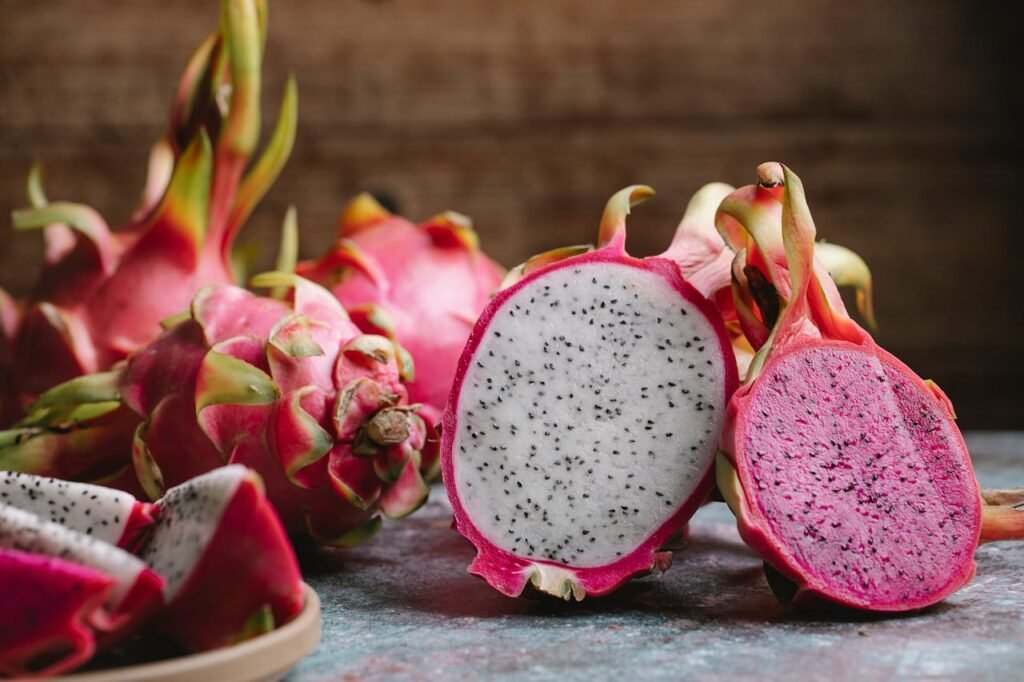
Also known as pitaya, this vibrant fruit comes from a climbing cactus that blooms at night.
- Fruit Flavor: Mildly sweet, kiwi-like texture with crunchy black seeds.
- How to Use: Eaten fresh, blended in smoothies, or added to fruit salads.
- Care: Needs a support structure, high light, warmth, and more water than most cacti.
- Bloom: Spectacular large white flowers that open at night.
3. Peruvian Apple Cactus (Cereus repandus)
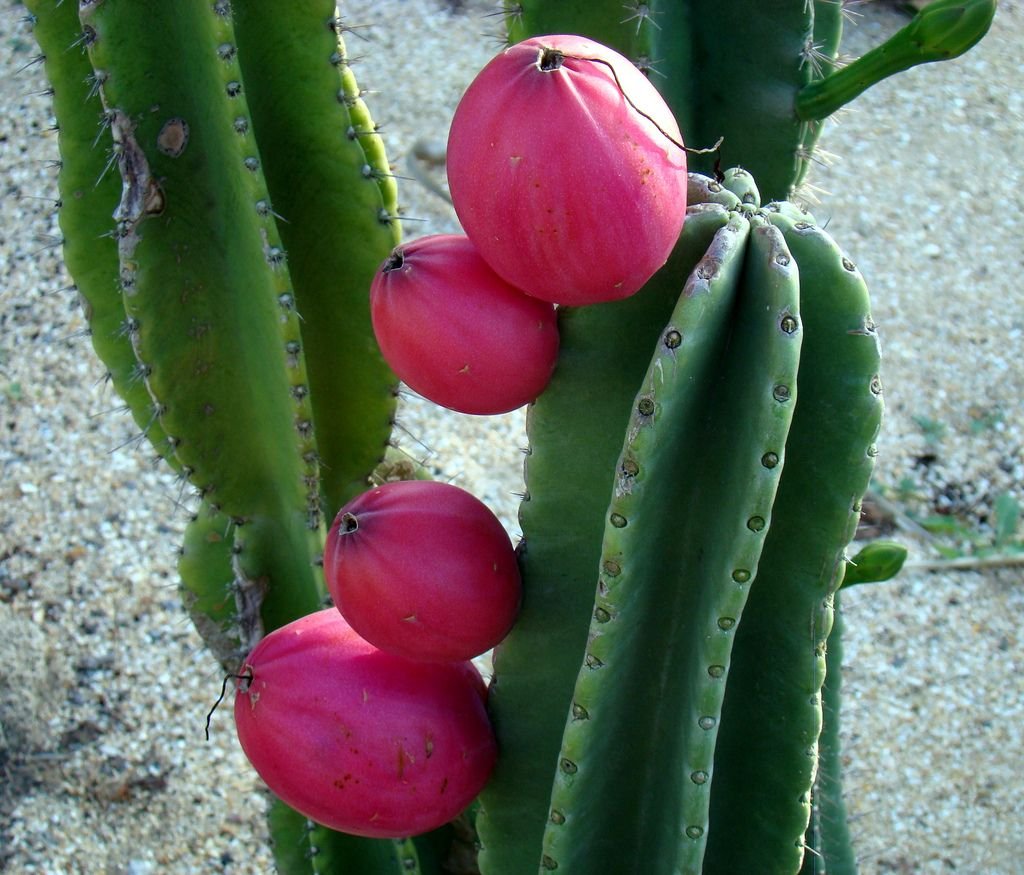
This tall, columnar cactus produces large, round, pale pink fruits.
- Fruit Flavor: Refreshingly sweet with a crispy texture—like a cross between watermelon and apple.
- How to Use: Eaten raw, juiced, or used in desserts.
- Care: Needs lots of sun and space; ideal for large outdoor containers or garden beds.
4. Barrel Cactus (Ferocactus spp.)
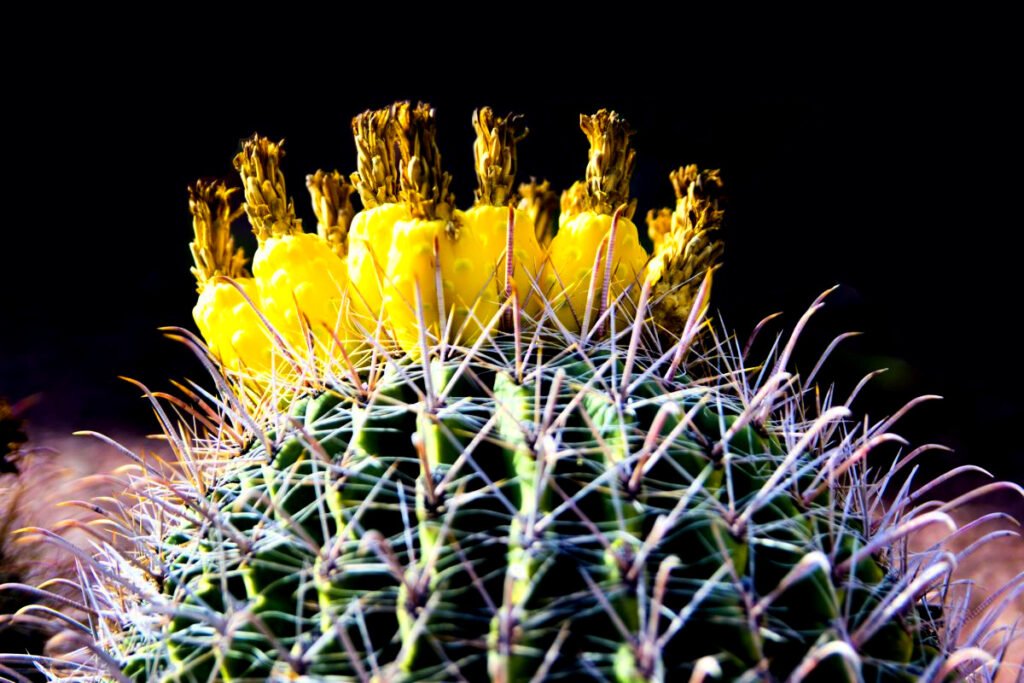
These stout, ribbed cacti can produce small, edible yellow fruits.
- Fruit Flavor: Tart and lemony, with a fibrous texture.
- How to Use: Traditionally used by Indigenous peoples; can be candied or made into jelly.
- Care: Needs full sun, fast-draining soil, and minimal water.
5. Indian Fig Cactus (Opuntia ficus-indica)
A cultivated variety of prickly pear, prized for its spineless paddles and juicy fruits.
- Fruit Flavor: Sweeter and juicier than wild prickly pears.
- How to Use: Widely used in commercial juice, candies, and jams.
- Care: Ideal for home gardeners; can thrive in poor soil and hot climates.
6. Cholla Cactus (Cylindropuntia spp.)
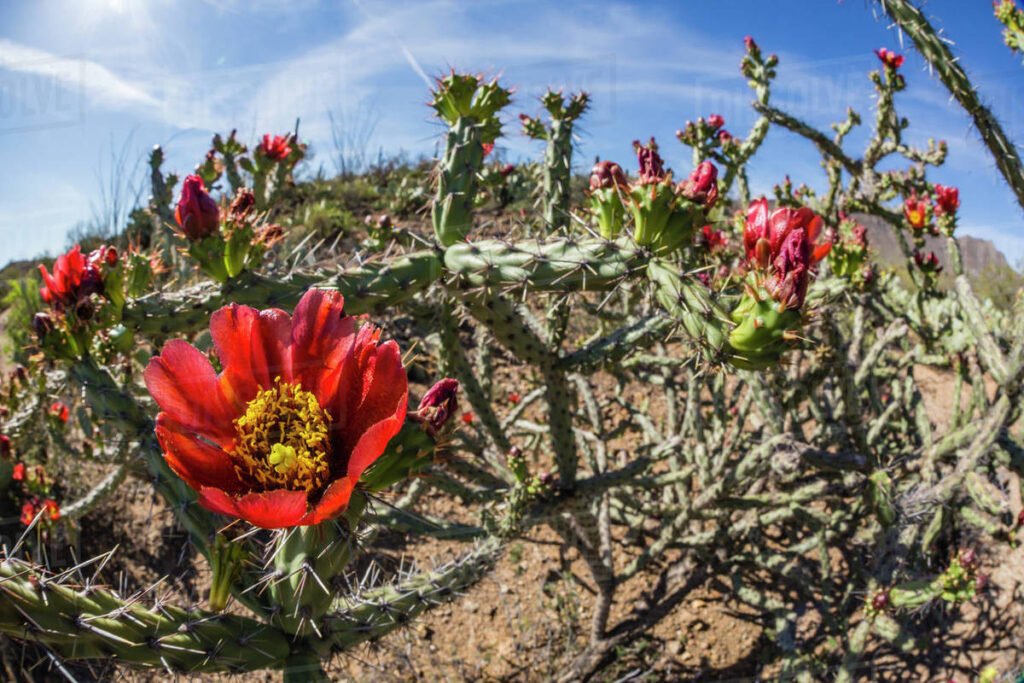
While the fruits are smaller, Cholla buds and young fruits are edible and nutrient-rich.
- Fruit Flavor: Mild, best when roasted or boiled.
- How to Use: Often used in Indigenous food traditions as a side dish.
- Care: Tough and extremely drought-tolerant, but wear gloves when handling!
7. Saguaro (Carnegiea gigantea)
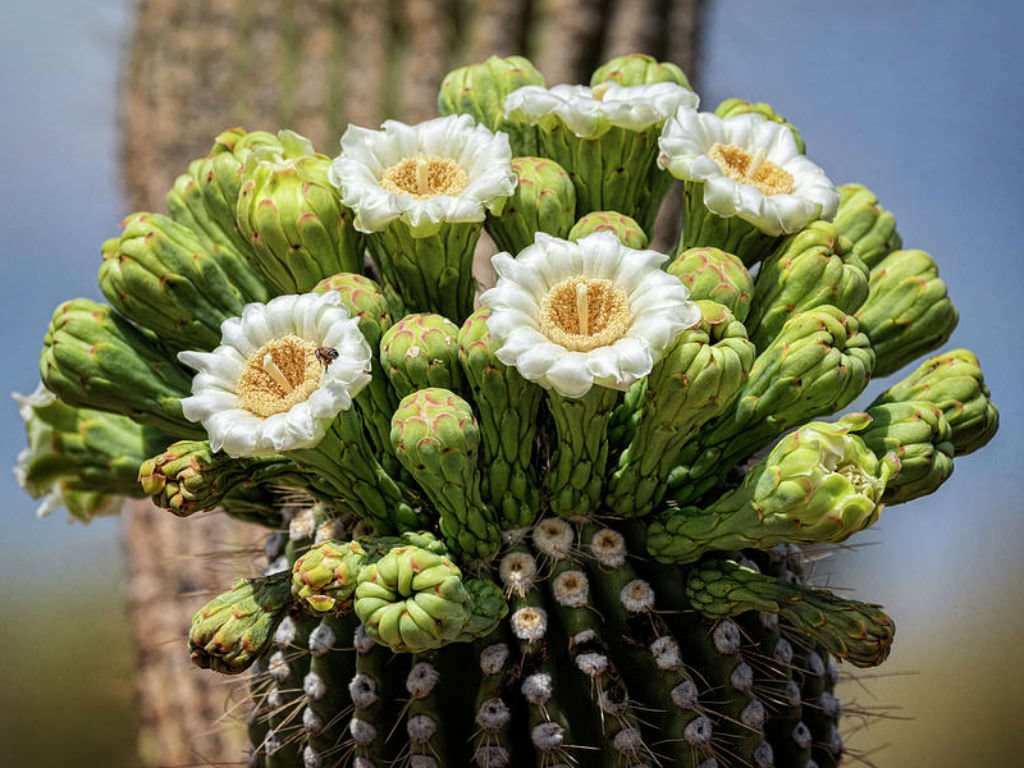
The majestic cactus of the Sonoran Desert produces small red fruits.
- Fruit Flavor: Sweet and seedy, used to make syrup and wine.
- How to Use: Best harvested in early summer; often processed into jam or juice.
- Care: Slow-growing; better admired in nature reserves unless you’re very patient.
8. Pitaya Agria (Stenocereus gummosus)
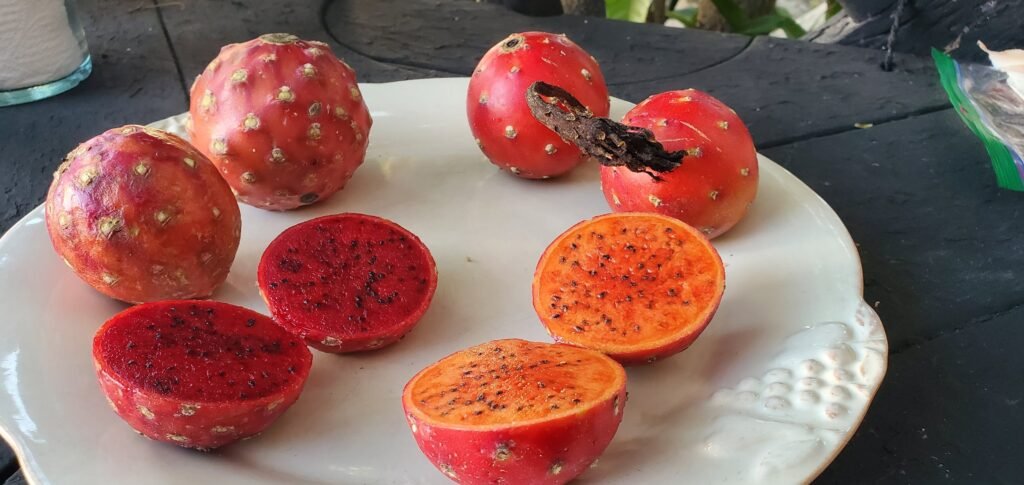
A wild relative of dragon fruit, commonly found in Baja California.
- Fruit Flavor: Tart and rich in vitamin C.
- How to Use: Ideal for refreshing drinks, jelly, or even fermented into beverages.
- Care: Requires full sun and well-draining soil.
9. Arizona Queen of the Night (Peniocereus greggii)
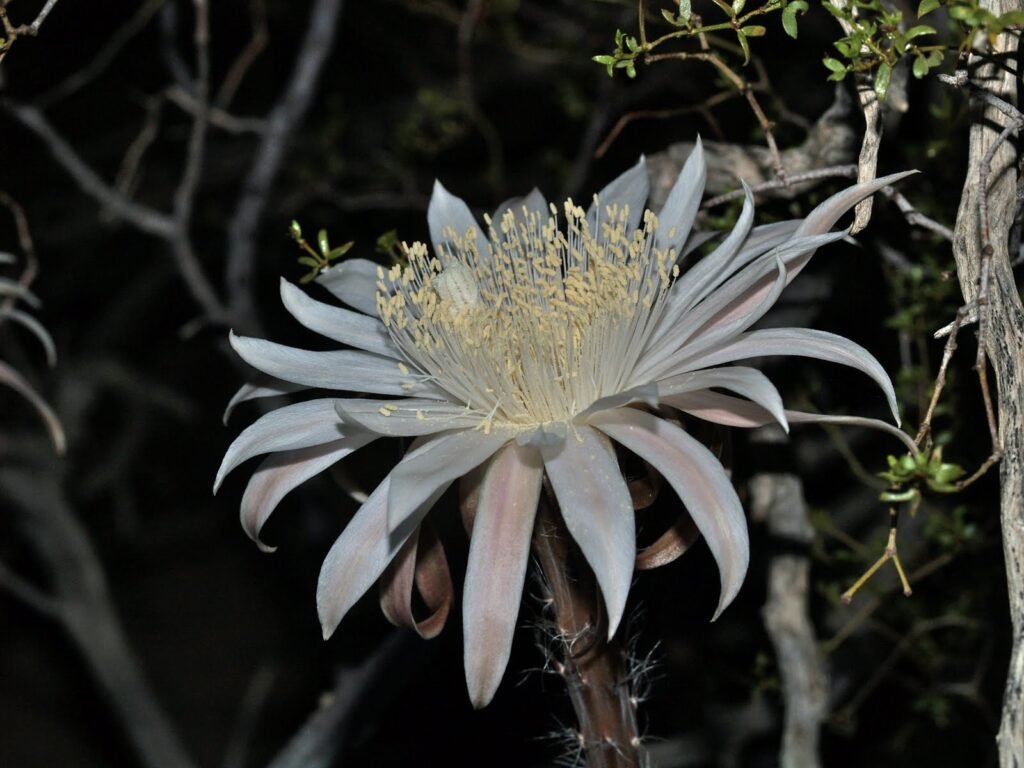
A rare cactus with a single-night bloom and fruiting capability.
- Fruit Flavor: Mild and juicy with red pulp.
- How to Use: Not commonly grown for fruit, but edible when ripe.
- Care: Prefers desert climates; challenging but rewarding to grow.
10. Turk’s Cap Cactus (Melocactus spp.)
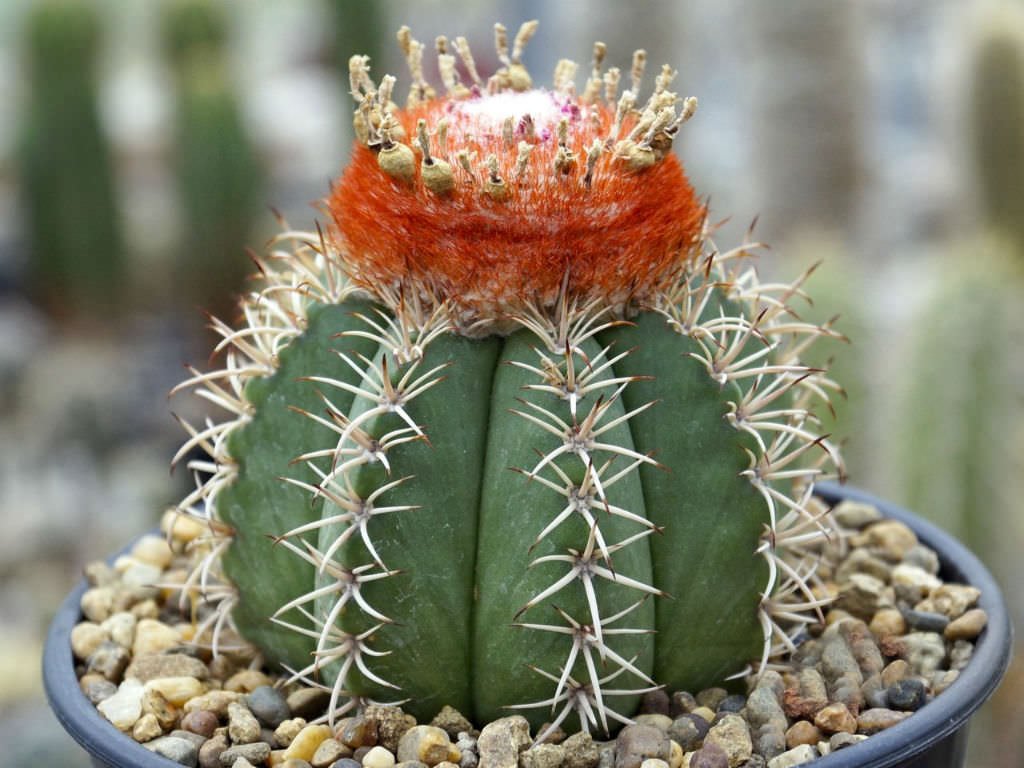
Distinct for its red fruit emerging from a woolly “cap” structure.
- Fruit Flavor: Small, sweet, and juicy.
- How to Use: Often eaten fresh as a novelty.
- Care: Grows well in containers; prefers warm, sunny environments.
How to Grow Cactus Fruit Plants
Whether you’re gardening in-ground or using containers on your patio or windowsill, edible cacti are surprisingly easy to grow.
Light and Location
Cactus fruit plants need at least 6–8 hours of sunlight daily. A south-facing location or greenhouse is ideal. If you’re indoors, a strong grow light is necessary to support flowering and fruiting.
Soil and Drainage
Use a cactus-specific soil mix or blend regular potting soil with sand and perlite. Drainage is crucial—never let roots sit in water.
Watering
Water deeply but infrequently. Allow soil to dry completely between waterings. Overwatering is the most common killer of cacti.
Container Growing
Many edible varieties thrive in pots. Choose terracotta containers for breathability and avoid plastic unless it has excellent drainage.
Temperature
Most cactus fruit plants prefer warm temperatures (65–90°F) and can tolerate some cold but not frost. Protect during winter or bring containers indoors.
Harvesting and Using Cactus Fruit
Harvest time depends on the species, but most cacti fruit in late spring through early fall.
How to Know It’s Ripe
- Color has deepened.
- Fruit easily detaches from the plant.
- Slight softness when gently squeezed.
Use tongs or gloves to pick fruit from spiny varieties. Once harvested, rinse well and carefully peel before eating.
Ways to Use Cactus Fruit
- Fresh Eating: Chilled and sliced—delicious and hydrating!
- Jams & Syrups: Prickly pear makes a gorgeous ruby-red jelly.
- Smoothies: Dragon fruit and apple cactus are smoothie-friendly.
- Fermented Drinks: Try pitaya wine or prickly pear mead.
- Salads: Add sweetness and texture to fruit or green salads.
Cactus Fruit Nutrition and Benefits
Cactus fruits are more than just eye candy—they’re packed with goodness that supports your body inside and out. If you’re looking for a healthy snack that’s easy to grow at home, fruiting cactus plants are a smart and sustainable choice.
Here’s what makes cactus fruit a natural superfood:
- High in Antioxidants
Especially in varieties like prickly pear, cactus fruits contain betalains and polyphenols—antioxidants that help fight oxidative stress and may reduce the risk of chronic diseases like heart disease and cancer. - Rich in Vitamin C
This essential vitamin plays a key role in immune function, collagen production, and iron absorption. Just one serving of cactus fruit can provide a significant portion of your daily vitamin C needs. - Loaded with Fiber
Both soluble and insoluble fiber are present in cactus fruit, which helps regulate digestion, lower cholesterol levels, and keep blood sugar balanced. - Anti-Inflammatory Properties
Compounds found in cactus fruit have been linked to reduced inflammation and even relief from hangovers and muscle soreness according to early research. - Low in Calories, High in Hydration
These fruits are mostly water, making them excellent for hydration, especially in hot climates or after a workout. And because they’re low in sugar and fat, they make a guilt-free snack. - Supports Blood Sugar Control
Several studies have found that prickly pear, in particular, can help reduce blood glucose spikes after meals, making it beneficial for those with insulin resistance or type 2 diabetes.
Whether eaten fresh, juiced, or blended into smoothies, cactus fruits deliver a refreshing punch of flavor and wellness benefits in every bite.
Sustainable Gardening with Edible Cacti
One of the most exciting reasons to grow cactus plants that produce edible fruit is their role in eco-friendly and sustainable gardening.
Unlike water-hungry crops, cactus plants thrive with minimal irrigation. They store water in their thick stems and leaves, allowing them to flourish in arid conditions where other plants would struggle.
Here’s why edible cacti support a greener future:
- Excellent for Xeriscaping
Edible cactus varieties are ideal for xeriscaping—a landscaping method that reduces or eliminates the need for irrigation. - Low Carbon Footprint
Growing your own cactus fruit at home reduces the environmental impact of transporting fruit long distances. - Minimal Input, High Yield
You don’t need fertilizers, pesticides, or constant watering to enjoy cactus fruit harvests. Once established, they’re largely self-sustaining. - Edible Landscaping
These plants offer both beauty and productivity. Incorporating them into your garden or balcony allows you to grow food and decorate your space at the same time. - Great for Urban Gardeners
Their compact growth and container-friendliness make edible cacti perfect for small spaces, apartments, or city rooftops.
Choosing edible cacti means you’re not only growing food—you’re supporting a more climate-conscious lifestyle.
Common Problems and Solutions
Even hardy cactus plants can face a few challenges:
- Overwatering
Most edible cacti die from “too much love.” Make sure the potting mix dries completely before rewatering. - Pests
Watch for mealybugs or scale insects. Wipe with alcohol-dipped cotton or use neem oil. - Lack of Fruiting
This is usually due to insufficient light or nutrients. Increase sun exposure and feed a cactus-safe fertilizer during active growth. - Frost Damage
Move potted plants indoors during cold snaps or use frost covers in-ground.
FAQs
Q1: Are all cactus fruits safe to eat?
No, not all cactus fruits are edible. Some are bitter, toxic, or simply inedible due to tough spines or high oxalate content. Stick with known varieties like prickly pear, dragon fruit, and Peruvian apple cactus for safe consumption.
Q2: Can I grow fruiting cacti indoors?
Yes—especially in a sunny spot like a south-facing window or under a strong grow light. Just ensure they get at least 6–8 hours of light daily. Dragon fruit, in particular, adapts well to indoor growing with the right support.
Q3: How long does it take for cactus plants to bear fruit?
It varies. Fast-growing varieties like dragon fruit can start producing in 1–2 years, while others like Peruvian apple cactus may take several years. Proper light, warmth, and care accelerate fruiting.
Q4: What’s the best way to remove spines from cactus fruit?
Wear gloves and use tongs when handling prickly varieties. Rinse the fruit, then burn off fine glochids over a gas flame or rub them away with a cloth before peeling.
Q5: Is cactus fruit suitable for pets?
While the fruit itself is generally non-toxic to most pets when peeled, always check with your vet before feeding any new plant. Some parts of the cactus plant, especially spines and sap, can be harmful if ingested.
Final Thoughts
Cactus plants that produce edible fruit combine resilience, beauty, and utility in a way few other plants can. Whether you’re drawn by their exotic appearance, delicious fruit, or low-maintenance needs, these desert treasures bring something truly unique to your garden or windowsill.
From sweet prickly pears to dragon fruit showstoppers, there’s a cactus fruit out there for everyone.
With a little care and patience, you can enjoy the pleasure of harvesting your own exotic fruit—no desert required.
